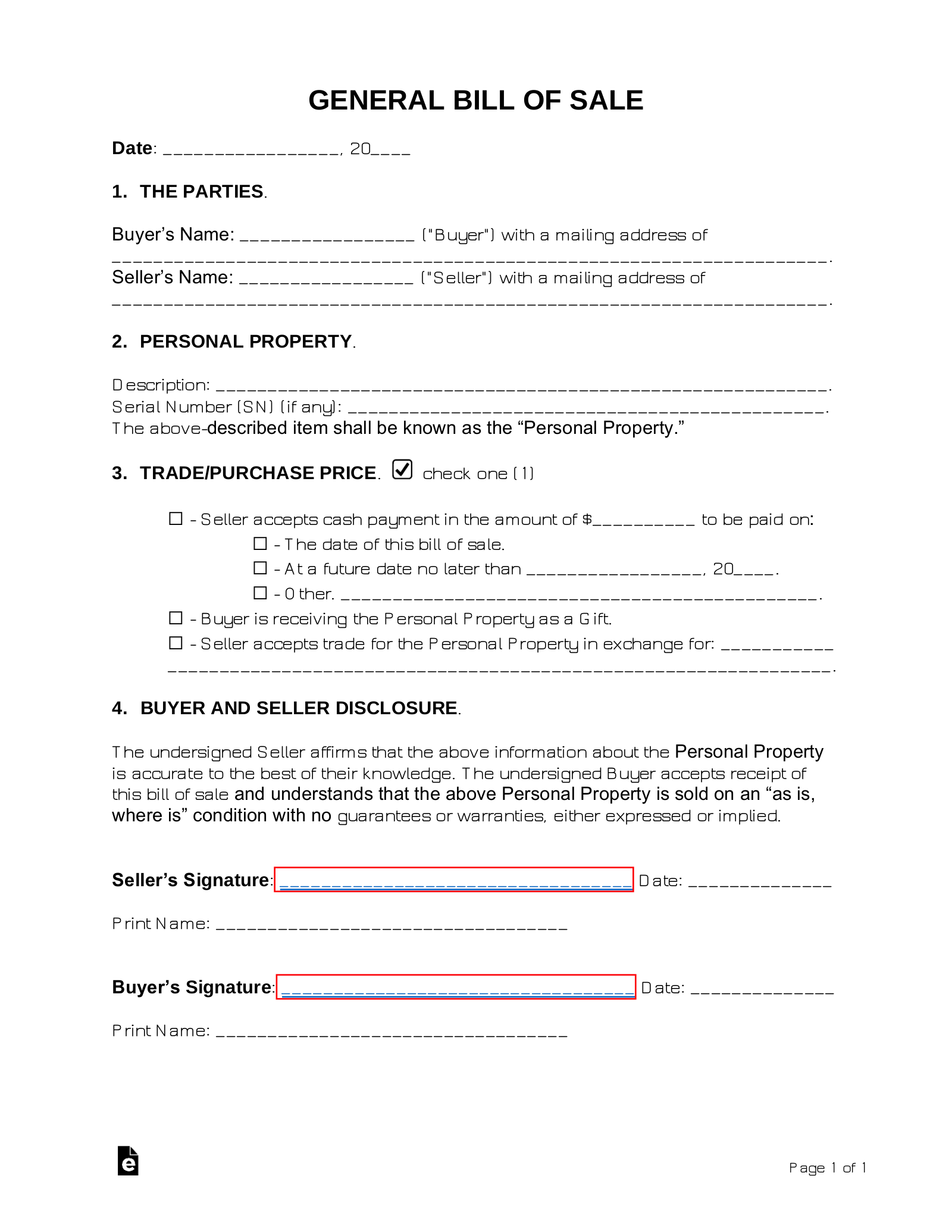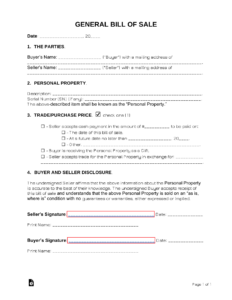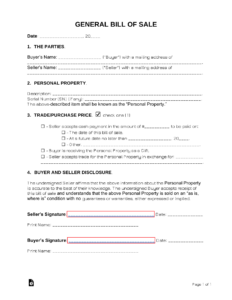When you’re involved in buying or selling property, the focus naturally tends to be on the big-ticket item itself: the land and the buildings. However, quite often, a real estate transaction isn’t just about the bricks and mortar. It frequently involves the transfer of certain personal belongings or fixtures that are staying with the property, and that’s where a crucial document often comes into play. It helps both parties clearly define what’s included and what’s not, preventing misunderstandings down the line.
Navigating the complexities of property transfers can sometimes feel overwhelming, with many forms and agreements to consider. But understanding each document’s role is key to a smooth and legally sound transaction. While deeds transfer ownership of the real property, there’s another piece of the puzzle that ensures everything else tied to the sale is properly accounted for and legally transferred.
Understanding the Purpose of a Real Estate Bill of Sale
At its heart, a real estate bill of sale is a legal document that records the transfer of ownership of personal property from a seller to a buyer, specifically in conjunction with the sale of real estate. Think of items like appliances, curtains, light fixtures, or even outdoor sheds that might be included in the sale but are not technically part of the “real property” itself. While the deed handles the land and structures, the bill of sale ensures these movable items have a clear paper trail, defining what is included in the purchase price beyond the home itself.

It’s vital to differentiate this from a deed. A deed conveys title to real property – the land and anything permanently attached to it. A bill of sale, on the other hand, deals exclusively with personal property. Without a separate bill of sale, items like a refrigerator, washing machine, or even a specific piece of furniture that the seller agreed to leave behind might not be legally transferred, leading to potential disputes after closing. It ensures there’s no ambiguity about what belongs to whom once the keys are handed over.
For both buyers and sellers, having a clear and comprehensive bill of sale is incredibly beneficial. For the buyer, it provides legal proof of ownership for the personal items they’ve purchased along with the home. This can be important for insurance purposes, future resale, or simply for peace of mind. For the seller, it clearly delineates what personal property has been transferred, protecting them from claims on items they intended to take or were not part of the agreement.
Properly documenting these items minimizes the risk of disagreements after the sale is complete. Imagine finding out the beautiful chandelier you thought was included has been removed, or the seller claiming the outdoor grill was never part of the deal. A detailed bill of sale prevents such headaches by creating a definitive record. This ensures a transparent and amicable transfer of all agreed-upon assets.
Key Elements to Include in Your Bill of Sale
- Date of the transaction
- Names and contact information of both seller and buyer
- A clear statement of transfer of ownership
- A detailed, itemized list of all personal property being transferred
- The agreed-upon value or consideration for the personal property (often stated as nominal, like $10, if its value is bundled with the real estate price)
- Signatures of both the seller and the buyer
- Witness signatures, if required by local regulations or desired for extra security
Navigating Common Scenarios for Using a Real Estate Bill of Sale
The situations where a real estate bill of sale becomes indispensable are more common than you might think. In a typical residential home sale, for example, it’s frequently used to transfer appliances like refrigerators, stoves, dishwashers, and washers/dryers. It also covers window treatments, specific light fixtures, or even garden sheds that are not permanently affixed but are intended to remain with the property. Clearly listing these items ensures that both parties are on the same page about what is included in the sale beyond the structure itself.
Beyond standard residential transactions, consider the sale of a commercial property. Here, a bill of sale can be even more critical. It might cover specialized equipment, furniture, inventory, or even client lists that are being transferred as part of a business sale tied to the real estate. Without this document, the transfer of these business assets could be legally murky, potentially leading to significant operational and legal challenges for the new owner.
Another frequent scenario involves estate sales or properties being sold through foreclosure. In these situations, homes often come with various personal items left behind. A real estate bill of sale helps in itemizing and formally transferring these belongings, ensuring that the new buyer has clear legal ownership and that the estate or lender has properly divested all assets. It streamlines the process and clarifies what the new owner is receiving.
It’s not just about the tangible items either. Sometimes, even intangible assets like warranties for appliances or transferable service contracts that are tied to specific personal property might be referenced within a bill of sale to ensure their proper transfer. The key is thoroughness and clarity. A well-prepared document avoids assumptions and provides a solid legal framework for all personal property changing hands.
Utilizing a reliable real estate bill of sale template can significantly streamline your property transactions. It provides a structured framework, ensuring you cover all the necessary legal bases when transferring personal property alongside real estate. This thoughtful approach helps in avoiding future disagreements and contributes to a smooth, efficient, and legally sound closing process for everyone involved.
By meticulously documenting every item through this specific type of bill of sale, you are taking a proactive step to protect both your interests as a buyer or seller. It ensures that the transition of ownership is as clear and straightforward as possible, leaving no room for doubt about what stays and what goes. This attention to detail contributes immensely to a positive and professional transaction experience for all parties involved in the sale.



